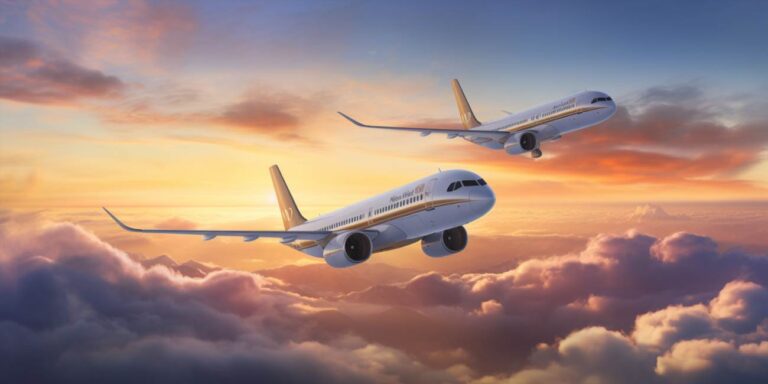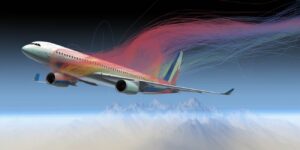Airbus and Boeing have distinctive design philosophies that set their aircraft apart. Airbus planes often feature a fly-by-wire system, emphasizing automation and a more centralized control approach. On the other hand, Boeing planes maintain a more traditional, manual control system, putting a premium on pilot skills and control. This fundamental difference has sparked endless debates among aviation enthusiasts and industry experts.
When it comes to capacity, the battle of the titans continues. Airbus‘ A380, the world’s largest passenger airliner, stands in contrast to Boeing‘s 747. Both giants offer massive seating capacities, allowing airlines to transport a vast number of passengers on long-haul flights. The rivalry reaches new heights with the introduction of the Airbus A350 and the Boeing 787 Dreamliner, showcasing cutting-edge technology and fuel efficiency.
The quest for fuel efficiency has become a central theme in the airbus vs boeing planes saga. Airbus champions its A320neo family, incorporating advanced technologies like the Pratt & Whitney PurePower Geared Turbofan engines. Meanwhile, Boeing responds with the 737 MAX series, featuring innovations such as the CFM International LEAP engines. Both manufacturers strive to provide airlines with cost-effective solutions, balancing operational expenses and environmental impact.
It’s not just about the skies; the competition extends to the military sector as well. While Airbus has the A400M Atlas, a versatile military transport aircraft, Boeing counters with the iconic C-17 Globemaster III. The battle for military contracts adds another layer to the overarching question of which manufacturer is truly superior.
The global aviation landscape witnesses an ongoing tug-of-war between Airbus and Boeing, each unveiling new models, securing orders, and striving to outdo the other. Market dynamics, geopolitical considerations, and technological advancements all play crucial roles in shaping the fortunes of these aviation behemoths. Airlines face the challenging task of deciding between Airbus and Boeing planes, evaluating factors like operational efficiency, maintenance costs, and passenger experience.
Airbus a320 vs boeing 737 – comparing the most popular narrow-body jets
When it comes to the aviation industry, the rivalry between Airbus A320 and Boeing 737 is akin to a high-stakes chess match played in the skies. These narrow-body jets have been the workhorses of countless airlines, shuttling passengers across the globe with remarkable efficiency and reliability.
Airbus A320, introduced in the late 1980s, marked a paradigm shift with its innovative fly-by-wire technology. This revolutionary feature allowed for smoother control and enhanced safety measures. The A320 family includes various models, such as the A318, A319, A320, and A321, each catering to different market segments with varying seating capacities.
On the other side of the spectrum, the Boeing 737, which made its debut in the 1960s, has undergone multiple transformations, evolving into the 737NG (Next Generation) series and later the 737 MAX. Known for its iconic design and reliability, the 737 has maintained its popularity through the decades.
Comparing the two, one key factor that often takes the spotlight is the seating capacity. The Airbus A320, especially the A321 variant, generally boasts a larger capacity compared to its Boeing counterpart. This can be a critical factor for airlines seeking to maximize passenger numbers on high-demand routes.
However, the Boeing 737 is no slouch when it comes to performance. The 737 MAX series, despite facing challenges, incorporates fuel-efficient engines and advanced aerodynamics, aiming to provide airlines with cost-effective operations. The fierce competition in the narrow-body segment has driven both manufacturers to constantly innovate and enhance their respective offerings.
Another crucial aspect is the cockpit philosophy. The Airbus A320 is known for its side-stick control system, offering a different feel compared to the traditional yoke in the Boeing 737. Pilots often have strong preferences, and the choice between the two can be influenced by factors such as training infrastructure and pilot familiarity.
When it comes to global market share, both Airbus and Boeing have a significant presence. Airlines worldwide operate a mix of A320 and 737 aircraft, reflecting the diverse needs of the aviation industry. The battle for dominance in this segment is not just about technical specifications; it’s also about winning the trust and preference of airlines and passengers alike.
As we delve into the specifics, it’s worth noting that both manufacturers offer fleet commonality benefits. Airlines can enjoy operational synergies by having a homogeneous fleet, simplifying maintenance, training, and logistics. This factor often plays a pivotal role in the decision-making process for airline executives.
Boeing 787 history
The Boeing 787, also known as the Dreamliner, stands as a testament to innovation and efficiency in the aviation industry. Launched in 2009, this aircraft has etched its mark in history.
One of the standout features of the 787 is its unparalleled cabin comfort. The interior design prioritizes passenger experience, with larger windows that allow natural light to permeate the cabin. The use of advanced materials not only makes the cabin more spacious but also enhances the overall journey for passengers.
With a remarkable range capability, the Boeing 787 is designed for long-haul flights, connecting distant corners of the globe. This impressive range is made possible by the aircraft’s lightweight construction and fuel-efficient engines. Airlines can now offer direct routes, reducing travel time and increasing fuel efficiency.
The success of the Dreamliner is further evident in its substantial orders and deliveries. Airlines around the world have recognized the economic advantages and passenger appeal of the 787, leading to a surge in orders. The delivery rate has been commendable, with Boeing efficiently meeting the demands of airlines globally.
Let’s delve into the specifics of the Dreamliner’s performance. The table below highlights key details:
| Aspect | Details |
| Cabin Comfort | The Boeing 787 prioritizes passenger comfort with spacious interiors and larger windows. |
| Range | Designed for long-haul flights, the 787 boasts an impressive range, enabling direct routes. |
| Orders and Deliveries | Global demand for the Dreamliner has resulted in numerous orders, with Boeing consistently meeting delivery expectations. |
The Boeing 787 continues to shape the aviation landscape, seamlessly blending technological prowess with passenger-centric design. As airlines worldwide embrace this marvel, the Dreamliner’s journey is far from over, promising a future where air travel is synonymous with comfort, efficiency, and connectivity.
Boeing 777 vs airbus a330 – the popular wide-body twin-engine jets
When comparing the Boeing 777 and Airbus A330, two prominent wide-body twin-engine jets, it’s essential to delve into their distinctive features, including engine options, wingspan, and runway performance.
The engine options available for the Boeing 777 include the General Electric GE90, Pratt & Whitney PW4000, and Rolls-Royce Trent 800. Each of these powerhouses brings its own set of characteristics, influencing factors like fuel efficiency, thrust, and maintenance costs.
On the Airbus A330 side, the engine options consist of the Rolls-Royce Trent 700, General Electric CF6, and the Pratt & Whitney PW4000. These engines contribute to the A330’s overall performance, determining factors such as range, payload capacity, and operational costs.
Turning our attention to the wingspan, a crucial factor influencing an aircraft’s aerodynamics and efficiency. The Boeing 777 boasts a notable wingspan of approximately 199 feet 11 inches (60.9 meters). In contrast, the Airbus A330 has a slightly smaller wingspan, measuring around 197 feet 10 inches (60.3 meters). This disparity in wingspan can affect maneuverability, fuel efficiency, and the overall design of the aircraft.
Now, let’s explore runway performance, a critical aspect for takeoff and landing operations. The Boeing 777 is renowned for its impressive runway performance, with the ability to take off from runways as short as 8,555 feet (2,607 meters) for the Boeing 777-200LR. The Airbus A330 also excels in this regard, with takeoff capabilities from runways as short as 9,844 feet (3,000 meters) for the A330-200. These figures highlight the flexibility and adaptability of these aircraft in various airport settings.
Summing up, the Boeing 777 and Airbus A330 stand as titans in the realm of wide-body twin-engine jets, each with its unique strengths in engine options, wingspan, and runway performance. As airlines weigh their options for long-haul operations, these factors play a pivotal role in shaping their decisions.
See also:






